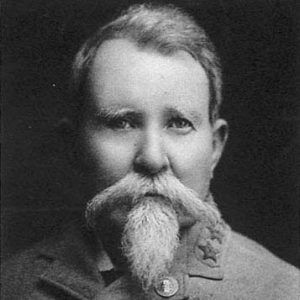calsfoundation@cals.org
Fifteenth (Johnson's) Arkansas Infantry (CS)
The Fifteenth (Johnson’s) Arkansas Infantry Regiment was a Confederate unit that served in the Western and Trans-Mississippi Theaters during the American Civil War. Organized in January 1862 of six companies, it was composed primarily of men from Columbia, Ouachita, Union, and Lafayette counties. The original command staff consisted of Colonel James M. Gee, Lieutenant Colonel John C. Wright, and Major P. Lynch Lee.
The unit was originally organized by Captain John L. Logan of the Eleventh Arkansas Infantry, and Gee was elected colonel in January 1862. The regiment was ordered to Memphis, Tennessee, and soon afterward to Fort Henry on the Tennessee River. In February 1862, the Union army began its assault on Fort Henry, and the Fifteenth Arkansas retreated to Fort Donelson on the Cumberland River fifteen miles away. Soon, Union forces arrived and surrounded the fort, cutting off escape. The entire garrison, including the Fifteenth Arkansas, surrendered on February 16, 1862. The officers of the Fifteenth Arkansas were sent to prison at Fort Warren, Massachusetts, and its enlisted men to Camp Butler, Illinois, where many died of disease. On release in September 1862, the regiment was exchanged at Vicksburg, Mississippi.
The regiment reorganized at Jackson, receiving four more companies from the Fortieth Tennessee Infantry. These were Arkansas soldiers from Drew, Craighead, and St. Francis counties, recently released from Camp Douglas after capture in April 1862 during the Island 10 Campaign. This brought the regiment to its required strength of ten companies. Colonel Gee did not return, and the command fell to newly promoted Colonel Ben W. Johnson. The Fifteenth Arkansas was assigned to Brigadier General William N. R. Beall’s brigade and sent to Port Hudson, Louisiana.
The Fifteenth Arkansas engaged in numerous skirmishes and battles in the vicinity of Port Hudson until May 21, 1863, when the Union army surrounded the Confederate forces, initiating a prolonged siege. At that time, the Fifteenth Arkansas was positioned on the left wing of the Confederate defenses and began constructing strong earthworks. Assisted by two cannon of the First Mississippi Artillery Regiment, the Fifteenth Arkansas experienced constant bombardment and repeated assaults on their position by superior numbers of the enemy. The Fifteenth’s position, named Fort Desperate, was never breached during the forty-eight-day siege, and on July 9, 1863, the regiment was surrendered with all Confederate forces at Port Hudson. At the start of the campaign, Colonel Johnson commanded 484 men, but he surrendered only ninety-two on July 9. This constituted an eighty-one-percent casualty rate, the highest of any unit within the Port Hudson defenses.
The officers remained in prison for the remainder of the war, while the enlisted men were paroled and sent west across the Mississippi River and exchanged. The remnant of the Fifteenth Arkansas Infantry served the remainder of the war in the Trans-Mississippi Theater. It was consolidated with survivors of the Nineteenth (Dockery’s) and Twentieth Arkansas Infantry regiments, captured and paroled from Vicksburg. This organization was designated as the Third Arkansas Consolidated Infantry. It was intended that the regiment be mounted, but only a small portion did so, serving in Brigadier General Thomas P. Dockery’s cavalry brigade, Fagan’s Division. The remaining dismounted portion served in the infantry regiment commanded by Colonel H. G. P. Williams.
The mounted portion of the Fifteenth Arkansas fought at the Action at Mount Elba in Arkansas on March 30, 1864. It next participated in fighting at Poison Spring on April 18, 1864, and Marks’ Mills on April 25. In October, it participated in Major General Sterling Price’s ill-fated Missouri Raid. No casualty reports are present for these engagements. The dismounted portion of the Third Consolidated Regiment fought at the Engagement at Jenkins’ Ferry on April 29–30, 1864. Commonly referred to as Williams Dismounted Casuals, the remnant of the Fifteenth in this unit fought on the extreme left flank of the Confederate lines, across Cox Creek, where it suffered numerous casualties. It was driven back by superior forces as it attempted to flank the Union lines engaged on the other side of the creek with the main Confederate force.
The remnant of the regiment saw no fighting for the remainder of the war and was stationed at Marshall, Texas, when General Kirby Smith surrendered the department on May 26, 1865. Ordered to Shreveport, Louisiana, to receive their paroles, the regiment did not report but simply disbanded without formally surrendering. Most individually journeyed to their homes, receiving their paroles at various locations along the way.
For additional information:
Bearss, Edwin C.Steele’s Retreat from Camden and the Battle of Jenkins’ Ferry. Little Rock: Pioneer Press 1967.
Hewitt, Lawrence Lee. Port Hudson, Confederate Bastion on the Mississippi. Baton Rouge: Louisiana State University Press 1994.
Richards, Ira Don. “The Battle of Jenkins’ Ferry.” Arkansas Historical Quarterly 20 (Spring 1961): 3–16.
Smith, Timothy B. Grant Invades Tennessee: The 1862 Battles for Forts Henry and Donelson. Lawrence: University of Kansas Press, 2016.
Anthony Rushing
Benton, Arkansas



 Benjamin W. Johnson
Benjamin W. Johnson 



Comments
No comments on this entry yet.